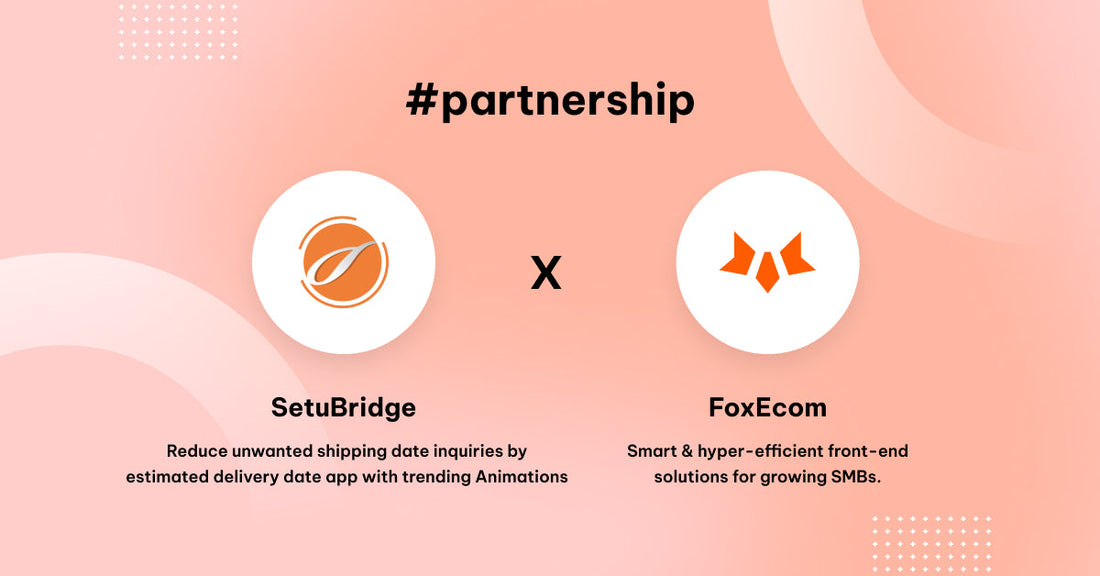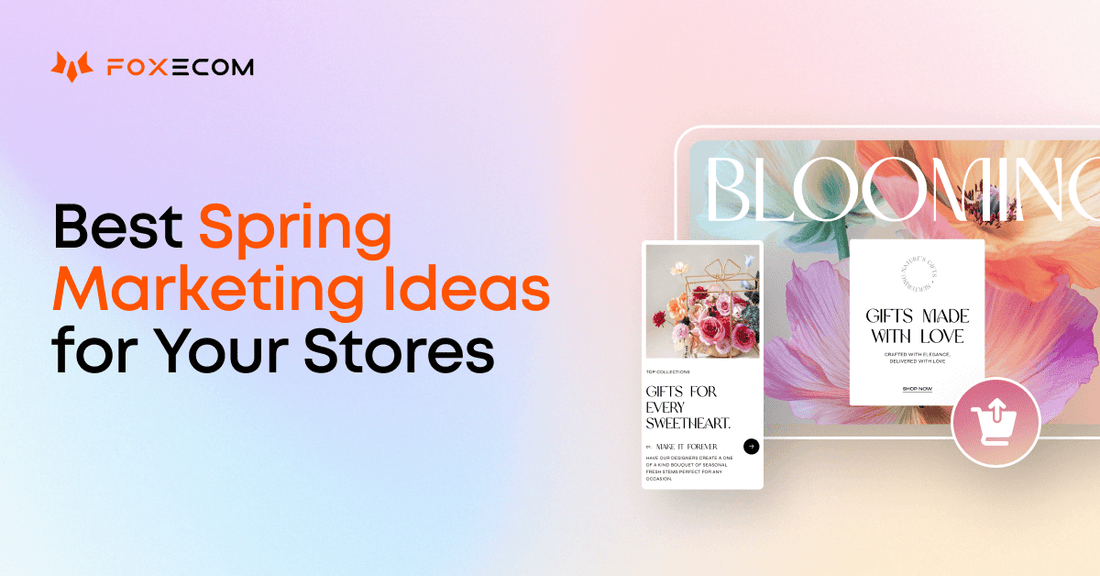Subscription commerce, once confined to streaming services, has rapidly expanded to encompass a wide range of consumer goods. A McKinsey study reveals that 15% of online shoppers are already part of subscription services, often through monthly boxes.This surging demand has fueled a 100%+ market growth in the past 5 years.
However, in a rapidly evolving market, new businesses seeking an opportunity must act swiftly and strategically.
Our expert guidance will explore 6 popular subscription models and provide you actionable steps to start a subscription business on Shopify.
Profitable Subscription Business Ideas on Shopify
3 primary subscription models are: Replenishment, Curation, and Access. Among these, curation is the most popular (55%), reflecting a strong consumer preference for personalized offerings.

Shopify subscription business ideas fall into 2 primary categories: access-based and auto-ship. Each encompasses 3 distinct subscription business types, and they are differentiated by industry, product characteristics, and subscription structure.
Access-Based Subscription Business Model
An access-based subscription business model provides customers with ongoing access to a service or digital product in exchange for recurring payments.
This model comprises 3 categories: Software as a Service (SaaS), content subscriptions, and perk subscriptions. Examples of access-based subscription businesses are Netflix, Spotify, and Amazon Prime.

1. Software as a Service (SaaS)
What's on offer: SaaS provides customers with cloud-based software solutions for business or personal use, replacing the need for on-premise installations.

- Growave provides a platform for brands to build loyalty programs, social commerce features, and gamification elements.
- Yotpo offers a review and user-generated content platform for online stores.
Best for: Businesses that offer software solutions, such as project management tools, customer relationship management systems, or design software.
2. Content Subscription Business Ideas
What's on offer: A content subscription business model offers access to valuable, time-sensitive, or exclusive digital content, such as e-books, publications, sheet music, statistics, courses, and games, in exchange for a recurring fee.

- The Plant Society sells plant care guides and exclusive plant content subscriptions.
- The Good Trade offers subscriptions for sustainable living content and guides.
Best for: Industries with high demand for ongoing information or education, such as news, research, education, technology, and finance.
3. Perk Subscription Business Model Examples
What's on offer:- Free shipping on all orders;
- Member-only discounts on products;
- Member-only wholesale pricing for bulk purchases;
- Priority service with faster customer support or delivery times.

Example: Grove Collaborative offers a subscription service for eco-friendly household and personal care products, providing subscribers with free shipping, discounts, and exclusive product selections.
Best for:
- Retailers with high-volume orders (e.g., Amazon Prime).
- Brands offering premium or wholesale goods.
- Service-oriented businesses (e.g., concierge or delivery services).
Auto-ship Subscription Business Model Examples
An auto-ship subscription business model is a convenient system where customers receive regular shipments of products or services, automatically charged to their account. This model includes 3 types: curated subscription boxes, replenishment subscriptions, and repeat service subscriptions.
4. Curated Subscription Box Business

What's on offer: A monthly delivery of selected products tailored to a specific niche or interest:
- Beauty products (e.g., skincare, makeup);
- Snacks or gourmet foods;
- Apparel or accessories;
- Hobby kits (e.g., art supplies, DIY projects);
- Health and wellness items.
Examples:
- Birchbox delivers a curated selection of beauty and lifestyle products each month.
- Loot Crate offers themed subscription boxes filled with collectibles and merchandise from popular fandoms and franchises.
Best for: The subscription box business is well-suited for industries that offer recurring or consumable products, such as beauty, health and wellness, F&B, fashion, and hobbies.
5. Replenishment Subscription Business Ideas
What's on offer: A recurring delivery of essential products, ensuring customers never run out. Typical offerings include:
- Household essentials (e.g., cleaning supplies, toiletries);
- Health products (e.g., vitamins, supplements, personal care);
- Pet supplies (e.g., food, grooming products);
- Office supplies (e.g., printer paper, ink cartridges).

- Dollar Shave Club delivers razors and grooming products every month.
- Blue Apron provides meal kits with pre-portioned ingredients and recipes.
Best for: Industries offering frequently replenished products, such as consumer goods, health and wellness, pet care, and office supplies.
6. Repeat Service Subscription Business Model
What's on offer: Ongoing services for clients typically billed monthly. These services include:
- Content creation (e.g., blog posts, social media management);
- Advertising and marketing services (e.g., pay-per-click campaigns, SEO);
- Cleaning services (e.g., residential or commercial cleaning);
- IT maintenance or support services.

Example: Managed Service Providers (MSPs) - Dataprise offers businesses monthly or annual subscriptions for IT services, including network monitoring, cybersecurity, and help desk support.
Best for: Content marketing agencies, advertising firms, cleaning companies, MSPs, and more.
How to Start a Subscription Business
Successful subscription businesses follow a series of steps, from researching customer needs to implementing seamless payment systems that ensure long-term retention.

Step 1: Starting a Subscription Business Masterplan
Before diving in, it's essential to have a solid plan in place.
Executive Summary
Merchants should outline the business name, mission statement, and a description of the product or service offering.
For example, if launching a subscription box business for eco-friendly household items, state the goal of providing customers with sustainable alternatives that promote greener living.
You keep this section concise and return to it after defining all other elements.
Define Target Audience

You must identify your target audience and create detailed customer personas by analyzing:
- Demographics: Age, gender, income level, geographic location, and education.
- Psychographics: Lifestyle, interests, values, and attitudes.
- Behavior: Purchasing habits, brand preferences, and online behavior.
What are the pain points or challenges your target audience experiences that your subscription service can uniquely solve? For instance, if your audience is busy professionals, you might offer a subscription box filled with time-saving products.
Sourcing Products for Subscription Boxes
Consumers demand exceptional experiences, according to McKinsey. Poor quality, limited selection, or perceived lack of value can lead to swift cancellations.
What sets your products apart?
1. Your products must have unique selling points (USPs) - personalized product options, limited-edition items, or early access to new collections. For instance, a skincare subscription where customers receive tailored formulations based on their skin type.

2. Your products should be trend-driven. Research the top-selling items for Shopify's mega store, particularly those that are in high demand during BFCM.
Pricing Strategy
1. Calculate Total Costs
Direct costs:- The cost of producing or purchasing your product.
- Packaging costs of filler paper, bubble wrap, inserts, packing tape, and postage.
- Labor costs associated with packing boxes.
- Transaction fees by payment processors and eCommerce platforms per order.
Indirect costs:
- Fixed costs: Monthly costs for software, services (e.g., Gmail, accounting), etc.
- Acquisition costs: Advertising and marketing expenses.
2. Determine Desired Profit Margin
This represents the percentage of revenue you want to retain after deducting all costs. For guidance, research industry benchmarks to identify common profit margins.
3. Calculate Selling Price
Pricing Formula: Selling Price = Total Costs / (1 - Desired Profit Margin)
Example: If your total costs are $20 and your desired profit margin is 45%, your selling price would be $20 / (1 - 0.45) = $36.36.
📚 Exclusive strategies for free: 7 Key Strategies to 10x Your Ecommerce Sales in 2024.
Step 2: Create a Subscription Website
- Start by choosing a memorable domain name. Ideally, it should be [brand-name].com.
- Decide how you'll manage your subscription service. Shopify offers built-in features, but dedicated apps (ReCharge, Bold Subscriptions, etc.) provide advanced tools for recurring billing, flexible delivery, and more.
- Craft a subscription box website that captivates and converts.
A well-chosen theme is essential for starting a subscription business. Websites with a strong design typically have bounce rates between 26% and 40%, but poorly designed sites can see rates as high as 70% to 90%.
Give your subscription box the online showcase it deserves. With Sleek theme x FoxKit AIO Sales Boost app, we can create something extraordinary.

Sleek's customizable sections, combined with FoxKit's upsell and cross-sell features, provide a robust solution for creating a compelling and engaging online shopping experience.
🔥 Start a subscription business effortlessly with Sleek. Enjoy the benefits of:
- 5 industry-leading demos with exceptional user experiences, including Beauty, Fashion & Clothing, Home & Furniture, and Sports.
- Showcase your products in style using interactive features, including Highlight Text With Image, Product Showcase, Video With Text, Lookbook Banner, and more.
- Boost sales with strategic upsells, cross-sells, and high-converting features such as Products Bundle, Countdown Timer, Media With Collection, Feature List, and more.
More than just a stunning website, seamless fulfillment, shipping, payments, and billing are the pillars of a perfect customer experience.
For more details and in-depth explanation, read our comprehensive guide to creating a subscription website on Shopify.
Step 3: Marketing and Sales Essentials for Subscription Box Business
A solid marketing and sales strategy is a must. Your approach should focus on 4 objectives:
- Customer acquisition
- Brand recognition
- Churn prevention
- Customer loyalty
To meet these objectives, your subscription business should implement the following practices:
1. Upsell and cross-sell: Offer complementary or upgraded products to increase the average order value (AOV). FoxKit offers the most effective upsell and cross-sell features, guiding customers toward additional purchases without disrupting their shopping experience.
Example: Dollar Shave Club effectively cross-sells shaving cream and moisturizers alongside their razor subscriptions.
2. Gamification: Use game-like elements, such as Lucky Wheel or rewards, to increase customer engagement. Businesses using gamification see 47% higher customer engagement (Invesp).

Example: Stitch Fix incorporates a gamified style quiz where customers answer personalized questions about their fashion preferences. Then, they recommend tailored clothing options.
3. Free trials: Customers can experience the product before committing to a paid plan.

Example: Who Gives A Crap, a Shopify-based eco-friendly toilet paper subscription service, offers a free trial for first-time customers to try their sustainable products.
4. Weekly/ monthly/ annual discounts: Regular discounts incentivize customers to stay subscribed, reducing churn. McKinsey found that smart pricing and promotions can increase revenue by 3-5%.
Example: A coffee subscription box could offer a 10% discount for a 3-month subscription and a 20% discount for a 12-month subscription.
🔥 FoxKit AIO Sales Boost offers a comprehensive suite of advanced upsell, cross-sell, and marketing features. Join the 12,000+ successful stores that trust FoxKit!
- Crave a sales boost and a bigger AOV? Try Product Bundles, Volume Discounts, and Pre-purchase Offers.
- Need a cart-value catalyst? In-cart Upsell is a proven winner for driving impulse purchases.
- Yearning for a more interactive shopping experience? Spice it up with Pop-up, Back-in-stock Alerts, Stock Scarcity, Lucky Wheel, etc.
- Are your marketing efforts falling short? Our comprehensive analytics dashboard provides the insights you need.
Success Story: Flaska, a pioneer in sustainable hydration, achieved remarkable results with FoxKit. Read how they doubled AOV and boosted conversion by 10%.
🎁 BFCM Deal: 20% OFF for 3 months with code BFCM2024WIN!💥Offer ends December 24, 2024.
📚 More curated marketing and sales techniques:
- How to Transform eCommerce Marketing Data into Profits in 2024
- Top 5 Marketing Strategies for D2C Brands
- The Power of Influencer Marketing for Small Ecommerce Businesses
- 9 Black Friday Marketing Strategies No One Tells You About (2024)
Step 4: Launch Your Subscription Business
Before launching, conduct thorough beta testing to identify and fix potential issues.
Prelaunch with Beta Testing
A beta launch allows a small group of customers to experience the subscription firsthand, providing invaluable feedback on user experience, product quality, and pricing strategies.
- Recruit a diverse group of beta testers.
- Provide clear instructions and guidelines.
- Gather feedback through surveys, interviews, and social media monitoring.
- Make necessary improvements to your product, pricing, and marketing.
👉 A closer look at the beta testing process: The Ultimate Guide to Beta Testing
Strategic Planning and Growth
Once your subscription business is running, shift your focus to strategic planning and growth. Closely monitor and optimize the following performance indicators:
- Average Revenue Per Subscriber (ARPS): Increase ARPS by offering premium tiers, add-ons, or complementary products.
- Monthly Recurring Revenue (MRR): Boost MRR by promoting longer-term subscriptions and providing exclusive benefits.
- Customer Acquisition Cost (CAC): Reduce CAC through referral programs and organic marketing to improve profitability.
- Churn Rate: Minimize churn by enhancing customer experience and offering loyalty rewards to increase retention.
6 Best Examples of Successful Subscription Business
Subscription boxes, software, and more - these businesses are thriving by offering consistent value. Let's dive into the strategies behind their success and learn how to start a subscription business.
1. Adobe Creative Cloud

Business model: Software as a Service (SaaS).
Results: Adobe's strategic shift from boxed software to a subscription model led to a remarkable increase in annual revenue, growing from $4 billion in 2013 to over $11 billion in 2020.
Success factors:
- Regularly updating the software with new features and improvements.
- Seamlessly integrating its software with cloud-based services to provide users with greater flexibility and accessibility.
- Offering a wide range of tools to meet the creative requirements of various users, from graphic designers to video editors.
Lesson learned: By delivering value through frequent updates and flexible pricing, businesses can establish highly scalable and profitable SaaS models.
2. MasterClass

Business model: Expert-led educational content subscription.
Results: MasterClass, valued at $2.75 billion, experienced rapid growth, attracting over 30,000 course sign-ups within its first four months.
Success factors:
- Investing in professional production values to create immersive learning experiences.
- Partnering with renowned experts and celebrities to provide unique and exclusive content.
- Focusing on offering in-depth, high-quality courses on specialized topics, catering to a discerning audience.
Lesson learned: Offering exclusive, top-tier content and continuously updating your library keeps users engaged and improves retention in content subscription businesses.
3. Amazon Prime

Business model: Perk subscription business model.
Results: Amazon Prime boasts over 200 million subscribers worldwide, including 167 million in the US. Prime members spend nearly twice as much annually compared to non-members. The subscription's popularity is evident in its 99% 2-year renewal rate in the US.
Success factors:
- Prime offers a comprehensive suite of benefits, including free shipping, access to Prime Video and Music, and exclusive deals.
- Simplifies shopping with fast delivery options and easy returns.
- By combining shopping with entertainment, Prime provides a more holistic value proposition for customers.
Lesson learned: Bundling diverse high-value perks can enhance customer retention, increase spending, and improve lifetime value, especially when they address various aspects of customers' daily lives.
4. Loot Crate

Business model: Curated subscription box business.
Results: Loot Crate, at its peak, attracted a substantial subscriber base of over 600,000 individuals, generating $161 million in revenue in 2016.
Success factors:
- Loot Crate focused on delivering monthly boxes filled with exclusive, themed merchandise from popular culture.
- The company actively cultivated a passionate community of fans through social media and events, fostering a sense of belonging and loyalty.
- Collaborations with major brands, such as Marvel and DC Comics, allowed Loot Crate to offer exclusive items and expand its reach.
Lesson learned: Offering exclusive, highly personalized products and leveraging community engagement can drive the success of curated subscription boxes, especially within niche markets.
5. Blue Apron

Business model: Replenishment subscription delivering meal kits.
Results: Blue Apron's revenue surged from $77.8 million in 2014 to a peak of $881 million in 2017. This growth was fueled by strong subscriber retention, driven by the convenience and appeal of its ready-to-cook meal kits.
Success factors: Its success lies in providing high-quality, pre-portioned ingredients that simplify home cooking while catering to a variety of dietary preferences. Blue Apron’s flexibility with meal plans allows customers to tailor subscriptions to their needs.
Lesson learned: Convenience and customization are primary drivers in replenishment models, ensuring long-term customer retention.
6. Handy

Business model: Repeat service subscription business.
Results: Handy has rapidly expanded, with millions of bookings and a strong presence in major US cities. Professionals on the platform have completed millions of tasks and consistently receive high ratings, averaging 4.5 stars.
Success factors:
- Handy's user-friendly booking platform and reliable network of professionals provide customers with a convenient and hassle-free experience.
- The company prioritizes customer trust by conducting thorough background checks and implementing quality control measures.
Lesson learned: To thrive in the repeat service subscription market, delivering a reliable, convenient, and trustworthy service is paramount. Consistent performance is essential for fostering long-term customer relationships.
FAQs
1. How much does it cost to start a subscription box business?
The cost to start a subscription business can range from $5,000 to $10,000 for initial expenses, including product sourcing, packaging, website setup, and marketing.
2. Which type of business is most likely to use the subscription business model?
SaaS, eCommerce, and content-based businesses are most likely to use the subscription model, offering recurring services like software access, curated products, or digital content.
3. Which is the lowest subscription level appropriate for a business that needs budgeting capabilities?
For businesses needing budgeting capabilities, the basic subscription level of an accounting tool, such as QuickBooks Simple Start or Xero Starter, is typically the most affordable and appropriate.
Conclusion
Crafting a successful subscription business demands strategic planning, data-driven insights, and the right tools. Retailers should focus on providing value through personalization, convenience, and customer engagement.
By focusing on these elements, businesses can build lasting relationships, drive customer loyalty, and achieve sustainable growth in the competitive subscription commerce market.






